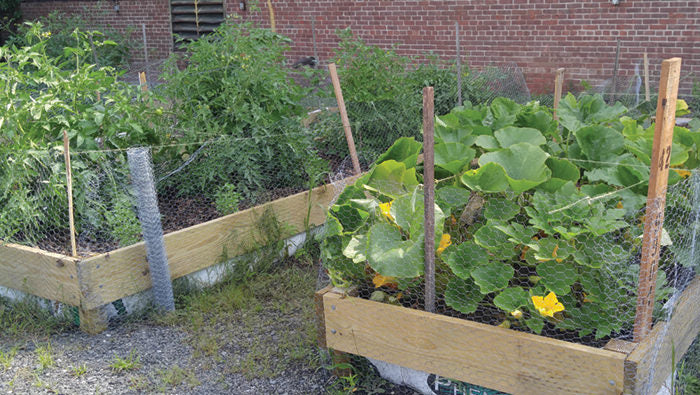
Coping with Drought
This past year saw many challenges for growers of vegetables, whether in the field or in a garden. Drought was a major issue for much of the northeast. What can be done now and next year if this dry trend continues?
Vegetables and fruits are 80-95% water. Most vegetable plants need a minimum of 1” of water each week to survive, but more during peak growth periods. Lack of rain or irrigation can also drastically reduce the quality and amount of a harvest. Low moisture in the soil, often caused by high temperatures, will reduce root growth and nutrient uptake, stunting the plants even before fruits form. Excessive heat interferes with pollination and discourages bees from traveling. High soil temperatures can also kill beneficial organisms like earthworms and good bacteria. We can’t control the amount of rain that will fall, but we can prepare now and mitigate the effects of lack of rain during the season.
Add Organic Matter to your soil before planting, or even better, in the fall. Turn compost into the soil or plant a cover crop to till into the soil in the spring. The higher the organic matter in the soil, the more ability it has to absorb and hold water until plant roots need it. Organic matter will also help keep the soil cooler than hard clay or sandy soil.
Till Less. Consider ‘no-till’ garden practices. The more the soil is disturbed, the more air is in between the soil clumps which can draw moisture from the soil. No Till often allows a previously cut cover crop to remain on the top of the soil to act as a mulch. Or use a low maintenance living mulch such as dwarf white clover between plants and in rows instead of leaving bear open ground. This reflects the heat from the sun to keep the soil cooler which helps retain moisture.
Use Mulches. Natural mulches such as straw, compost or salt hay. Again, they help cool the soil and hold moisture. Plastic mulches also can help hold moisture in the soil but make it harder for natural rain to get through. Consider using these mulches between rows rather than in the planting beds or use drip irrigation under the plastic.
Control Weeds. Weeds are often better designed to find and take up water from the soil than the vegetables you plant. They will often flourish when your plants wither. Weed clean using a hoe or trowel to remove stubborn weeds.
When watering, water deep. “A sprinkle a day …” does not supply water to plants. Waving a hand held sprinkler wand over the soil does cool the soil for a few minutes, but most of the moisture never reaches the roots of the plants which are 4-12” into the soil. Sprinkling actually encourages weeds. Using an old fashion sprinkler set up in the garden for an hour will work better, but wets the leaves which can encourage diseases. Soaker hoses can make a huge difference in the overall health of your plants. It takes a ¾” soaker hose about 3 hours to deliver 1” of water to the soil. Adding a timer to a soaker hose will allow worry feel watering. A rain gauge in the garden will let you know how much Mother Nature supplies each week.
Plants need more than the average 1” of water per week during specific growth periods.
All seeds need complete contact with the soil and consistent moisture during germination. Water the area all around the seed bed and regularly for the following week. The same goes for transplanting young plants into the garden. Start by watering the hole. Fill the planting hole with water and allow it to be absorbed into the surrounding soil. Then fill the hole again with water and plant the transplants into the mud. This helps prevent the garden soil from pulling the moisture away from the young roots of the transplant. Whenever possible, plant transplants and seeds in the evening, on a cloudy day or in the rain.
During flowering most plants need extra moisture to complete pollination. If the weather is too dry or hot, bees will not fly. Moisture added to the garden will attract the bees. Cucumbers, melons and squash all depend on bees to pollinate. These vegetables also need extra water during fruit enlargement. Pea and beans need extra moisture when they are first flowering. Tomatoes, eggplant and peppers need extra moisture during early flowering, fruit set and enlargement. Leafy crops such as spinach and lettuce need extra moisture from seed to harvest.
All life needs water. Prepare now with Good Seed for a Glad Harvest.
